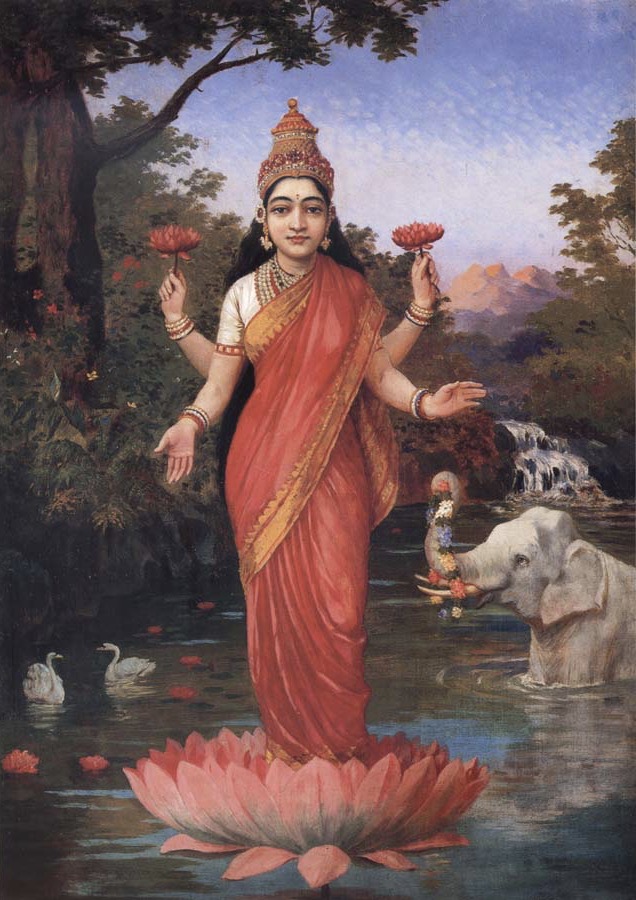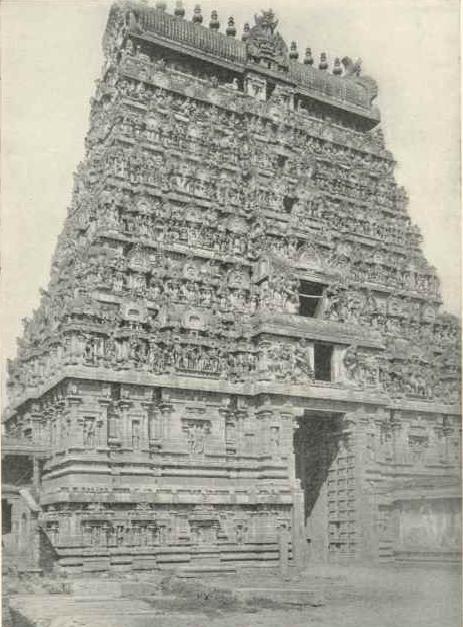|
Uthsavar
In Hinduism, utsava murti,James Lochtefeld (2002), The Illustrated Encyclopedia of Hinduism: A-M, The Rosen Publishing Group, , page 726 utsavar or uthsavar, is a form of a ''murti'' (icon) which represents a deity. The portable utsavar is employed in the tradition of temple processions, serving as a substitute for the central idol present in the temple shrine, called the mulavar. Etymology The term is derived from the Sanskrit word ''utsavam'', a festival predominantly associated with the Hindu religion. In Hinduism, it refers to the festival deity's murti, usually taken during temple festival processions. Images An utsava murti is generally made of metal, whereas a mulavar murti is usually made of stone. Ablutions are performed on the utsavar images during daily prayer, or during festivals. It is performed in a sequence with various material like milk, curd, honey, and sugar. These are meant to indicate five elemental aspects of earth, and with the ablution, prayers are ... [...More Info...] [...Related Items...] OR: [Wikipedia] [Google] [Baidu] |
Hindu Iconography
Over the millennia of its development, Hinduism has adopted several iconic symbols, forming part of Hindu iconography, that are imbued with spiritual meaning based on either the scriptures or cultural traditions. The exact significance accorded to any of the icons varies with region, period and denomination of the followers. Over time some of the symbols, for instance the Swastika has come to have wider association while others like Om are recognized as unique representations of Hinduism. Other aspects of Hindu iconography are covered by the terms murti, for icons and mudra for gestures and positions of the hands and body. Hindu sacraments Hindu sacraments are physical pieces of that help objects or markings that are considered sacred and used as a sign of devotion by the followers of Sanathana Dharma (Hinduism). These are often objects associated with a puja (prayer) or religious ceremony. Murti Murtis are statues and idols of Hindu Gods. They are a huge part of Hind ... [...More Info...] [...Related Items...] OR: [Wikipedia] [Google] [Baidu] |
Chidambaram
Chidambaram is a town and municipality in Cuddalore district in the Indian state of Tamil Nadu, on the banks of the Vellar River where it meets the Bay of Bengal. It is the headquarters of the Chidambaram taluk. The town is believed to be of significant antiquity and has been ruled, at different times, by the Pallavas until ninth century, Medieval Cholas, Later Cholas, Later Pandyas, Vijayanagar Empire, Thanjavur Nayakas, Marathas and the British. The town is known for the Thillai Nataraja Temple and Thillai Kali Temple, and the annual chariot festival held in the months of December–January (In the Tamil month of Marghazhi known as "Margazhi Urchavam") and June to July (In the Tamil month of Aani known as "Aani Thirumanjanam"). One of the Divya Desams Divya Sri Govindaraja Perumal Temple (Thiruchitrakoodam) is a part of Thillai Nataraja Temple complex. Thiruvetkalam Shiva Temple, Vadakiruppu, Thirunelvayil Shiva Temple, Sivapuri and Tirukkazhippalai Palvannanathar Temple ... [...More Info...] [...Related Items...] OR: [Wikipedia] [Google] [Baidu] |
Thiruvarur
Thiruvarur () also spelt as Tiruvarur is a town and municipality in the Indian state of Tamil Nadu. It is the administrative headquarters of Thiruvarur district and Thiruvarur taluk. The temple chariot of the Thyagaraja temple, weighing and measuring tall is the largest temple chariot in India. Thiruvarur is the birthplace of Tyagaraja, Muthuswami Dikshitar and Syama Sastri, popularly known as the Trinity of Carnatic music of the 18th century CE. Thiruvarur Thiyagarajaa Swaamy temple is older than Tanjore big temple. Thiruvarur was a part of Thanjavur district until 1991. The Odambokki river passes through the centre of the town. Thiruvarur covers an area of and had a population of 58,301 as of 2011. Out of total population of Tiruvarur, 1,403,348 in the district, 257,795 are in urban area and 1,006,482 are in rural area. 65,220 households are in urban, 261,999 are in rural area. It is administered by a first grade municipality. The town is a part of the Cauvery delta region ... [...More Info...] [...Related Items...] OR: [Wikipedia] [Google] [Baidu] |
Sirkali
Sirkazhi () also spelled as ''Siyali'' is a major municipal town in Mayiladuthurai district in Tamil Nadu, India. It is located from the coast of the Bay of Bengal, and from the state capital Chennai. Sirkazhi was a part of Thanjavur district until 1991 and has later been part of Nagapattinam district. The town covers an area of and in 2011 had a population of 34,927. It is administered by a second grade municipality. Sirkazhi is part of the Cauvery delta region and agriculture is the major occupation. Roads are the main means of transportation; the town has of district roads, including a national highway. The town is believed to be of significant antiquity and has been ruled by the Medieval Cholas, Later Cholas, Later Pandyas, the Vijayanagar Empire, the Marathas and the British. The Tamil trinity of Carnatic music; Arunachala Kavirayar (1711–78), Muthu Thandavar (1525–1600) and Marimutthu Pillai (1712–87), originated from Sirkazhi. The Saiva saint Tirugnanasamban ... [...More Info...] [...Related Items...] OR: [Wikipedia] [Google] [Baidu] |
Srirangam
Srirangam, is a neighbourhood in the city of Tiruchirappalli in the Indian state of Tamil Nadu. A river island, Srirangam is bounded by the Kaveri River on one side and its distributary Kollidam on the other side. Considered as the first among the 108 Divya Desams, Srirangam is home to a significant population of Sri Vaishnavites (followers of Lord Vishnu). Sri Ranganathaswamy Temple Srirangam is famous for its Sri Ranganathaswamy Temple, a major pilgrimage destination for Hindus (especially Srivaishnavites) and the largest temple complex in India. According to the temple's website, Srirangam is considered the biggest functioning Hindu temple in the world, as it covers an area of about with a perimeter of 4 km (10,710 ft). Angkor Wat is bigger but non-functioning. Srirangam among a few " self-manifested" shrines (Swayam Vyakta Kshetras) of Lord Vishnu. The temple complex is enormous and spans . It has seven ''prakaras (enclosures). These enclosures are fo ... [...More Info...] [...Related Items...] OR: [Wikipedia] [Google] [Baidu] |
Madurai
Madurai ( , also , ) is a major city in the Indian state of Tamil Nadu. It is the cultural capital of Tamil Nadu and the administrative headquarters of Madurai District. As of the 2011 census, it was the third largest Urban agglomeration in Tamil Nadu after Chennai and Coimbatore and the 44th most populated city in India. Located on the banks of River Vaigai, Madurai has been a major settlement for two millennia and has a documented history of more than 2500 years. It is often referred to as "Thoonga Nagaram", meaning "the city that never sleeps". Madurai is closely associated with the Tamil language. The third Tamil Sangam, a major congregation of Tamil scholars said to have been held in the city. The recorded history of the city goes back to the 3rd century BCE, being mentioned by Megasthenes, the Greek ambassador to the Maurya empire, and Kautilya, a minister of the Mauryan emperor Chandragupta Maurya. Signs of human settlements and Roman trade links dating back to 3 ... [...More Info...] [...Related Items...] OR: [Wikipedia] [Google] [Baidu] |
Shiva
Shiva (; sa, शिव, lit=The Auspicious One, Śiva ), also known as Mahadeva (; ɐɦaːd̪eːʋɐ, or Hara, is one of the principal deities of Hinduism. He is the Supreme Being in Shaivism, one of the major traditions within Hinduism. Shiva is known as "The Destroyer" within the Trimurti, the Hindu trinity which also includes Brahma and Vishnu. In the Shaivite tradition, Shiva is the Supreme Lord who creates, protects and transforms the universe. In the goddess-oriented Shakta tradition, the Supreme Goddess ( Devi) is regarded as the energy and creative power (Shakti) and the equal complementary partner of Shiva. Shiva is one of the five equivalent deities in Panchayatana puja of the Smarta tradition of Hinduism. Shiva has many aspects, benevolent as well as fearsome. In benevolent aspects, he is depicted as an omniscient Yogi who lives an ascetic life on Mount Kailash as well as a householder with his wife Parvati and his three children, Ganesha, Kartikeya and A ... [...More Info...] [...Related Items...] OR: [Wikipedia] [Google] [Baidu] |
Garuda
Garuda (Sanskrit: ; Pāli: ; Vedic Sanskrit: गरुळ Garuḷa) is a Hindu demigod and divine creature mentioned in the Hindu, Buddhist and Jain faiths. He is primarily depicted as the mount (''vahana'') of the Hindu god Vishnu. Garuda is also the half-brother of the Devas, Daityas, Danavas and Yakshas. He is the son of the sage Kashyapa and Vinata. He is the younger brother of Aruna, the charioteer of the Sun. Garuda is mentioned in several other texts such as the Puranas and the Vedas. Garuda is described as the king of the birds and a kite-like figure. He is shown either in a zoomorphic form (a giant bird with partially open wings) or an anthropomorphic form (a man with wings and some ornithic features). Garuda is generally portrayed as a protector with the power to swiftly travel anywhere, ever vigilant and an enemy of every serpent. He is also known as Tarkshya and Vainateya. Garuda is a part of state insignia of India, Indonesia and Thailand. The Indonesian official ... [...More Info...] [...Related Items...] OR: [Wikipedia] [Google] [Baidu] |
Chola Dynasty
The Chola dynasty was a Tamils, Tamil thalassocratic Tamil Dynasties, empire of southern India and one of the longest-ruling dynasties in the history of the world. The earliest datable references to the Chola are from inscriptions dated to the 3rd century BCE during the reign of Ashoka of the Maurya Empire. As one of the Three Crowned Kings of Tamilakam, along with the Chera dynasty, Chera and Pandya dynasty, Pandya, the dynasty continued to govern over varying territories until the 13th century CE. The Chola Empire was at its peak under the Medieval Cholas in the mid-9th century CE. The heartland of the Cholas was the fertile valley of the Kaveri River. They ruled a significantly larger area at the height of their power from the later half of the 9th century till the beginning of the 13th century. They unified peninsular India south of the Tungabhadra River, and held the territory as one state for three centuries between 907 and 1215 CE.K. A. Nilakanta Sastri, ''A Histo ... [...More Info...] [...Related Items...] OR: [Wikipedia] [Google] [Baidu] |
Hinduism
Hinduism () is an Indian religion or '' dharma'', a religious and universal order or way of life by which followers abide. As a religion, it is the world's third-largest, with over 1.2–1.35 billion followers, or 15–16% of the global population, known as Hindus. The word ''Hindu'' is an exonym, and while Hinduism has been called the oldest religion in the world, many practitioners refer to their religion as '' Sanātana Dharma'' ( sa, सनातन धर्म, lit='the Eternal Dharma'), a modern usage, which refers to the idea that its origins lie beyond human history, as revealed in the Hindu texts. Another endonym is ''Vaidika dharma'', the dharma related to the Vedas. Hinduism is a diverse system of thought marked by a range of philosophies and shared concepts, rituals, cosmological systems, pilgrimage sites, and shared textual sources that discuss theology, metaphysics, mythology, Vedic yajna, yoga, agamic rituals, and temple building, among other to ... [...More Info...] [...Related Items...] OR: [Wikipedia] [Google] [Baidu] |
.jpg)


.jpg)





